By Vicky · Published Feb. 4th, 2022 · Updated Nov. 29th, 2022
When you buy through links highlighted with an asterisk (*) on this site, we may earn a small affiliate commission at no cost to you.
The Botanic Gardens is one of the most beautiful places to walk in Singapore. Our walking route takes you to all the highlights so you can make the most of your time in the gardens.
Singapore Botanic Gardens Map
Get the route by downloading the .gpx or .kml file below. For navigation with Maps.me on your mobile phone, simply download the .kml file and open to add it to the Maps.me bookmarks.
Page Contents:
How to get to Botanic Gardens
The easiest way to get to the Botanic Gardens is to take the MRT to the Botanic Gardens MRT station. This stop is on both the blue Downtown and orange Circle Lines. Take Exit A from the MRT and you will come up just by Bukit Timah Entrance Gate at the northern end of the Botanic Gardens.
The walk suggested here starts from Botanic Gardens MRT in the north and ends at Tanglin Gate at the southern end of the gardens. From Tanglin Gate there are bus stops nearby with buses going towards the city or out of the centre.
If, after leaving from Tanglin Gate, you decide to visit Dempsey Hill and Barracks afterwards (see below), there are several bus stops nearby on Holland Road.
There are a few other sensible options to leave/arrive at the park. From Wollerton Gate at the far end of Gallop Extension, it’s a 600 m walk to Farrer Road MRT. From Nassim Gate it’s a 2 km walk down famous Nassim Road (see below) to reach Orchard Road MRT.
Tips for Botanic Gardens
- The Botanic Gardens are very large, so allow at least half a day to explore.
- There are some maps inside the entrances you are free to take.
- Most of the Botanic Gardens is open from 5am to midnight and is free to enter.
- Some parts of the Garden are only open 7am-7pm.
- The National Orchid Garden is open 8:30am-7pm and is the only part of the garden for which you need a ticket ($5-$15)
- Don’t leave bags unattended – monkeys will steal them and guard them aggressively.
- Take a sun hat, sunscreen and plenty of water along.
- Navigation offline maps app Maps.me works quite well but there are so many trails in the garden it’s hard to plan a route.
- Check out other hikes on our Singapore Hiking Page
Northern Botanic Gardens
From Botanic Gardens MRT station Exit A, enter through Bukit Timah Gate. Pick up a small leaflet with a map just inside the entrance and continue into the gardens.
Around Eco-Lake
One of the first sites you’ll see is Eco-lake. It’s very pleasant to wander around the lake, making sure to take the small boardwalk over the water. Make sure to look out for otters and birds. Almost after a complete circle of the lake, head towards the Ethnobotany Garden and the Centre for Ethnobotany.
Centre for Ethnobotany
I found this small museum the most interesting in the Botanic Gardens. It tells you about the importance of several economic plants such as rubber, sugar cane, nutmeg, latex plant, cocoa and rice. There are exhibits that trace their history with maps and stories. There are also displays about local cultures and how they use plants for everything from cooking to toothpaste. Additionally, it’s a nice place to cool down with the air-conditioning.
After leaving the museum, head along the red brick path to the start of the Evolution Garden.
Evolution Garden
This garden was one of my favourites. On the Evolution Garden trail, you descend through time starting 4.5 billion years ago when the entire earth was covered not with plants but rocks. You walk through mosses, ferns and cycads before reaching the higher plants that are most common today. The ferns and cycads were cool to look at and the concept of walking through the plants of time was interesting. In some places it feels like you’re in Jurassic Park.
After walking around the Evolution Garden, continue heading south to the Central part of the gardens.
Best Things to do at Botanic Gardens
- Wonder at the beautiful flowers in the National Orchid Garden
- Stroll around gorgeous Swan Lake
- Snap a photo of the iconic Bandstand Gazebo
- Admire the colonial black-and-white bungalows in Gallop Extension
- Walk back in time to see ancient plants in the Evolution Garden
Central Botanic Gardens
No matter what walking route you take, you will soon be at Symphony Lake.
Around Symphony Lake
This is another lovely lake to walk around, with a few viewpoints along the way. At one end is the Symphony Stage where concerts are sometimes held. The surrounding pond contains amazing lily pads, larger than I had ever seen before, and if you’re lucky the colourful lilies will be flowering. Nearby Palm Valley is a great place to sit in the shade of a tree to relax and admire the view.
Rain Forest Walk
An optional extra is to walk along the Rain Forest trails. These are nothing special if you have been on other walking trails through the jungle of Singapore. If you haven’t yet hiked through the Singaporean jungle, the rainforest trails here are worth checking out. It’s always relatively quiet on these trails, and the shade from the giant trees means it’s a pleasant temperature.
National Orchid Garden
The National Orchid Garden is one of the top things to do in the Botanic Gardens. They showcase probably the best collection of orchids in the world. The Orchid Garden is very popular and there may be queues to get in, and queues within the garden to visit some of the greenhouses such as the Cool House. Try to avoid public holidays.
The Orchid Garden is open from 8:30am-7pm daily (with last admission 6pm). Tickets are $5 for locals and $15 for others, with big reductions for seniors (over 60), students and children. Tickets can be purchased on-site at the entrance to the Garden.
Camera for Beautiful Flower Photos
I’m a big fan of mirrorless cameras with replaceable lenses. I have a Sony NEX 6, which was one of the first mirrorless cameras from Sony back in 2013. Apart from the kit lens that came with the camera and a telezoom lens that I bought for safari, I bought some cheap second hand but high-quality old lenses from the analogue era from brands like Nikon. With an adapter* you can use these on mirrorless cameras, giving you top quality for cheap. My camera is getting old and I will replace it at some point buy a current model from Sony, like the Sony Alpha A6500:
Sony Alpha A6500 Mirrorless Camera on Amazon*.
Of course, cameras with replaceable lenses and advanced features are not for everyone. We have recently been using a Canon PowerShot G7 X Mark II, which still has some good features and excellent low-light performance, but no replaceable lenses:
Canon PowerShot G7 X Mark II on Amazon*.
Check out the complete list of hiking gear needed for Singapore:
Within the National Orchid Garden, must-sees include the Golden Shower Arches near the entrance, the Cool House at the far end, and the VIP Orchid Garden near Burkill Hall at the high point. You should allow 1-2 hours to walk around this section.
After the National Orchid Garden, we walked through the Ginger Garden (via some waterfalls) and along the car park to reach the entrance to the Gallop Extension. If you are tired or pressed for time, skip the Gallop Extension and head straight to the Southern Botanic Gardens.
History of Singapore Botanic Gardens
The gardens trace their origins to a former Botanical Garden at Fort Canning, instigated by Sir Stanford Raffles in 1822. Only later in 1859 was a garden laid out at its current location, with its design inspired by those who worked at Kew Gardens near London.
One of the main early roles of the garden was developing and studying economically important crops. Rubber was the most important of these and the nearby rubber plantations helped Singapore become a bustling centre of global trade.
In 1928 the gardens branched out into propagating and cultivating unique varieties of orchids, the results of which can be seen today in the National Orchid Garden. The gardens have continued to evolve while maintaining continuity with the past, and in 2015 Singapore Botanic Gardens became a World Heritage Site.
Gallop Extension
The highlight of the Gallop Extension is the two beautiful colonial black-and-white bungalows towards the far end. The Como Adventure Grove is a fun playground for children in this extension, but apart from that, this extension feels like it still needs more time to mature.
There are fewer trails in the Gallop Extension so once you head in, keep going until you reach the first black-and-white mansion set on an expansive lawn. This is the oldest surviving bungalow of its kind in Singapore, dating from 1898. It is now the Forest Discovery Centre, worth visiting if only to check out the beautiful architecture and interior design of the building.
Find more Fun Outdoor Activities in Singapore!
- Visit the Domes* at Gardens by the Bay
- See the animals at Singapore Zoo*
- Explore historic Singapore by Bike*
- Cycle around Pulau Ubin*
Botanical Art Gallery
From the first mansion, you can already see a second black-and-white mansion a short distance away at the top of the hill. There are also views from here over surrounding Singapore. This second bungalow now contains the Botanical Art Gallery. Again, a quick visit is worth it to see the inside of the old building.
Once you’ve seen these two colonial bungalows, head back towards the main part of the Botanic Gardens to explore the southern section.
Southern Botanic Gardens
After walking back alongside the car park, head right along the main track down to Swan Lake.
Around Swan Lake
This is a lovely lake, surrounded by greenery. If you’re lucky you’ll see some real-life swans. If not, there is a large sculpture of swans in the middle. Head around the lake, then left into the jungle.
Walk of Giants
The Walk of Giants is an elevated walkway through the jungle. To reach it, head up a large spiral staircase. Continue around on the walkway and then head right onto a bridge over the Discovery Wetlands.
Keppel Discovery Wetlands
From the bridge over the water, you have a great view of the habitats below. Continue across the bridge and turn left to walk around the end of the lake. Once heading back around the other side, take the steps down, and a small trail left that leads to a boardwalk through the wetlands. There are some lovely views from here and if you’re lucky you’ll see all kinds of birds.
Continue over the lake and head right back towards the car park and Ginger Garden. Near the waterfall, head up on the track towards the Bandstand Gazebo.
Near the Bandstand Gazebo
Before reaching the Gazebo you’ll find a small cactus garden, or Sun Garden, which is worth briefly walking through. As you head upwards you’ll soon see the famous Bandstand Gazebo sitting prettily at the top of the hill.
After admiring the gazebo, check out the bonsai nearby before reaching the Sundial Garden. This is designed to look like a formal Victorian Garden with complete symmetry and a sundial in the middle. If it’s sunny, check it out to see if it gives the correct time! When we were there it was very accurate. I suspect it always is.
From the Sundial Garden, head down to the Gardens Heritage Museum.
Singapore Botanic Gardens Heritage Museum
This museum, like the others, is free to get in and has nice air conditioning. The museum itself is of moderate interest but has one fun interactive exhibit where you can scroll through time to see the evolution of the garden.
Opposite the Heritage Museum is the CDL Green Gallery. This is very text-heavy and gives information about the global climate agreements and the targets of various counties. There is a tiny box squished in the corner at the end that tells you what you personally can do to help reduce your climate emissions and help the environment.
This gallery is the last stop in this walk around the Botanic Gardens. After leaving, head towards Tanglin Gate to exit the gardens. You can catch a bus from near here or check out the other options below.
Why is the Botanic Gardens a UNESCO World Heritage Site?
The Botanic Gardens is the only UNESCO World Heritage Site in Singapore, proclaimed in 2015. It won this designation for the cultural landscape and historical value of the gardens. It has been an important centre of science, research and botany in the tropics for over a hundred years and greatly contributed to the growth of rubber plantations in the region. The importance of this garden to the historical growth of Singapore and its aid in understanding tropical plants are key features of why it is now a World Heritage Site.
Options for Leaving the Botanic Gardens
Dempsey Hill & Tanglin Barracks
If you want a hipster brunch or lunch or dinner spot in chic colonial surroundings, head to Dempsey Hill. To get from Botanic Gardens to Dempsey Hill it’s a 1 km walk. After leaving Tanglin Gate, turn right along the large Holland Road before crossing over at the first junction. Then follow Minden Road up and all the way to the Barracks.
At Demsey Hill there are many nice cafes and restaurants. They are all located in old barracks, known as Tanglin Barracks. These were first built in 1860 and had thatched roofs, but they were expanded and improved later. Tanglin Barracks are actually the inspiration for the barracks in the fun murder-mystery book Revenge in Rubies*, set in colonial Singapore.
After food, there’s a convenient bus stop just below.
Nassim Road
If you want to walk from the Botanic Gardens to Orchard Road, head down Nassim Road, famous for being the most expensive road to live on in Singapore. Nassim Gate is in the Central section of the Botanic Gardens, from Tanglin Gate it’s 1.5 km walk to Nassim Gate. From here it’s 2 km walk along Nassim Road to Orchard Road. Once here, check out our Orchard Road Heritage Trail (coming soon) or head to Orchard Road MRT station.
Walking Along Nassim Road
Nassim Road is one of Singapore’s most exclusive streets and contains several interesting buildings. These can be hard to see because of the big gates and lush vegetation that obscures the properties. It’s a quiet street with few cars, so nice to walk along, though the pavement isn’t amazing.
One of the interesting buildings is Number 4 Nassim Road, today the Japanese Creative Centre. It’s very white and in a gorgeous colonial building. Eden Hall is a nice building too, designed in 1904 by renowned architect John Bidwell with an appearance a bit like a wedding cake. It now hosts the British High Commission.
There are many other embassies along this road, mainly in posh mansions. However, some buildings such as the old Saudi Arabia Embassy were bought only for investment purposes and are in a state of disrepair.
At the Lermit Road junction, a slope leads to Arwaa Mansion and it’s worth the little detour to peak at the grand exterior. Towards Orchard Road where you come out, the good-class bungalows end and the fancy apartments start. It’s not far from here to Orchard Road MRT or many bus stops to get home.
For another garden stroll, walk around Gardens by the Bay, or for more culture explore Little India or Kampong Glam. To explore the city, check out the Marina Bay Walk, or for pure nature visit Pulau Ubin. For other hiking ideas check out our Singapore Hiking page.
FAQs for Singapore Botanic Gardens
Most parts of the Botanic Garden are open from 5am to midnight, with lighting after dark. Areas without lighting are closed between 7pm and 7am.
The National Orchid Garden is open from 8:30am-7pm daily.
Tickets are $5 for locals and $15 for others, with large discounts for seniors (over 60), students and children.
The gardens are almost 2 kilometres long and roughly 500 metres wide on average.
Yes, the Botanic Gardens is all free except for the National Orchid Garden which makes up a small section of the park.
The Gardens are very large and there are many trails so how long it takes depends on what you want to see. It takes several hours to walk through most of the gardens with an additional hour or two if you also visit the National Orchid Garden.
The easiest way to reach the Botanic Gardens is by taking the MRT to Botanic Gardens MRT station, on both the blue Downtown and orange Circle Lines. Take Exit A from the MRT to get into the gardens. An alternative is to take a bus to nearby Tanglin Gate at the southern end of the Gardens.
Yes, the Botanic Gardens are the only World Heritage site in Singapore. It became a World Heritage site in 2015.
Dogs are allowed in some parts of the Botanic Gardens but only on a lead. There are many signs around the garden telling you where you can and cannot walk your dog.
You are not allowed to cycle within the Botanic Gardens. Leave your bike at the many bike parking stations near all the entrance gates.
Yes! A picnic in the gardens is a great idea. There are several cafes and restaurants but you are welcome to bring your own food. There are several large lawns with shade for your own garden picnic.

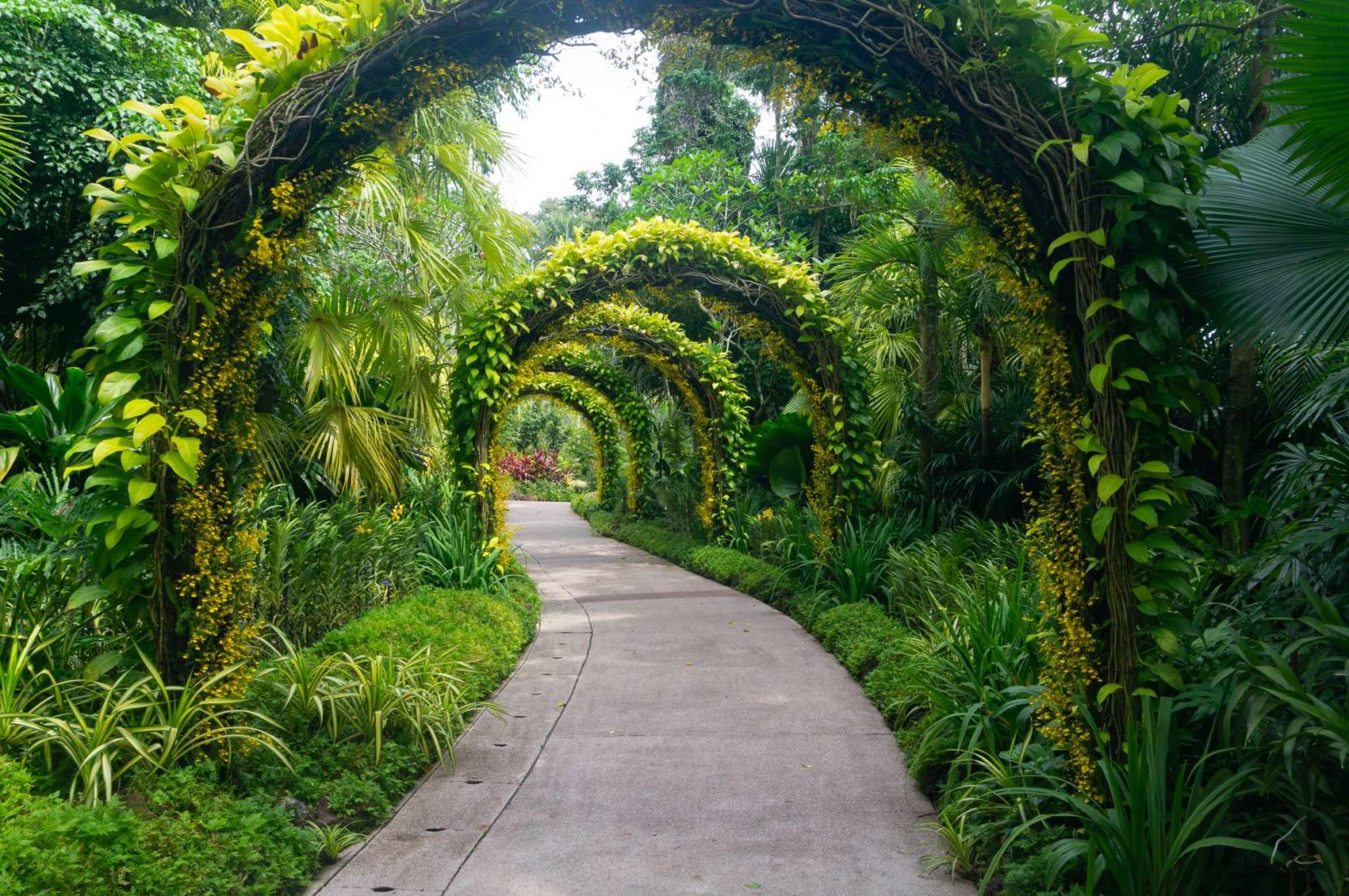





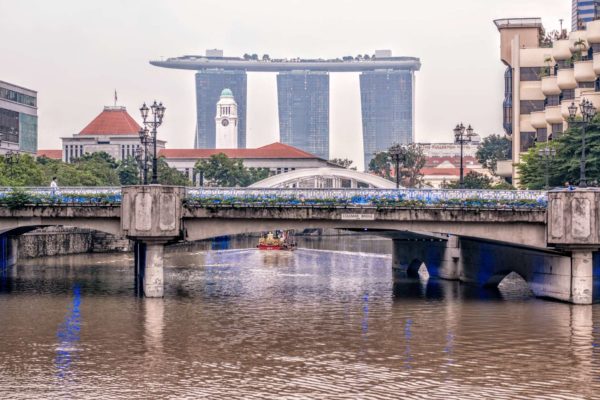
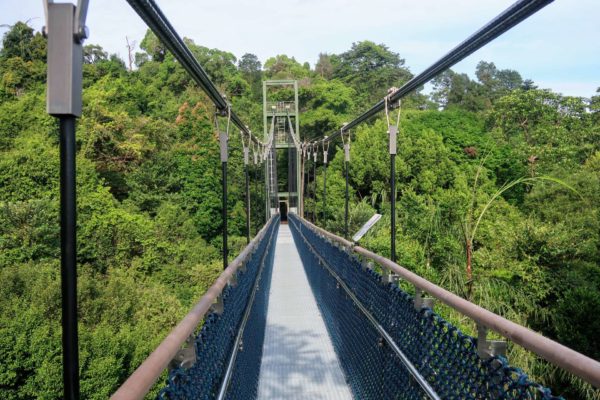
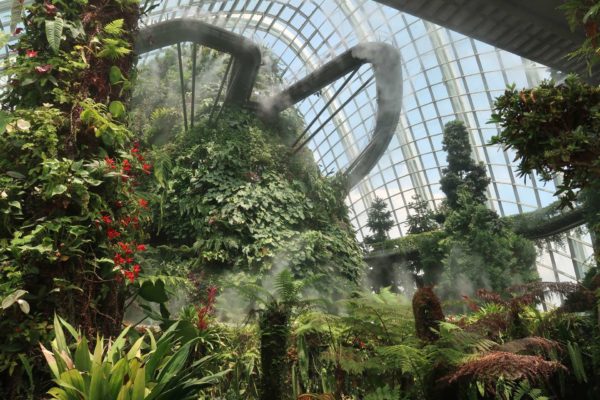
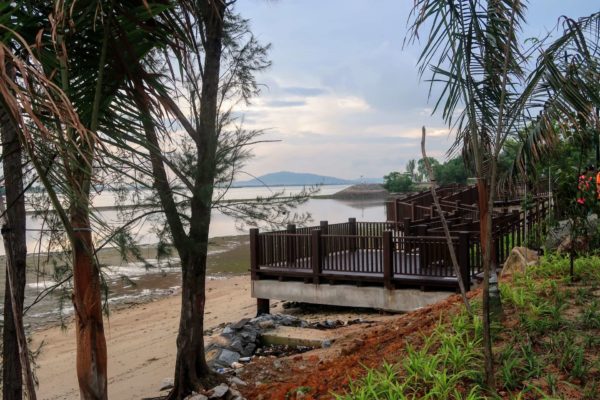
Are the gardens disabled friendly? Where are the cafes and restaurants?
Hi Marie, the botanic gardens are mainly disabled friendly – there are many routes to choose from and lots do not have steps or other impediments. The main area of cafes and restaurants it just outside the National Orchid Garden in the centre of the park.